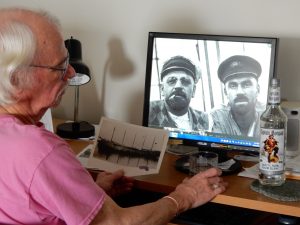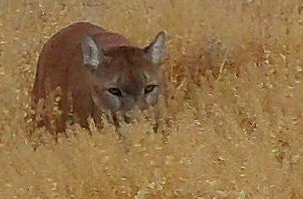The last installment of Four writers, four questions.
What are you working on right now?
For the past five or so years, I’ve been immersed in researching and writing about West Coast rum running, a fascinating topic which soon became an obsession. In January 1920, the National Prohibition or Volstead Act was officially declared in the U.S. of A. Meanwhile, voters in British Columbia decided, that after three years, they’d had enough of their government’s own failed attempt to curtail the consumption of alcohol and brought it to an end in a plebiscite that year. As a result, with liquor legal on one side of the border and outright illegal just over the line, rum running into the United States from British Columbia soon proved an extremely lucrative enterprise.
My primary focus has been to explore how rum running was operated out of British Columbia and down along the U.S. coast and even into Mexican waters. Basically, my goal is to provide not only a comprehensive history of the various vessels and characters involved in the maritime liquor trade, but also to explore the major economic and political consequences of what quickly proved a very rewarding enterprise for all involved.
Why is this meaningful to you?
 Maritime history has always been of particular interest to me especially having been born and raised on Canada’s West Coast and spending a lot of time out on the water ever since I was a boy sports fishing with dad on southern Vancouver Island. For most of my life, I’ve lived, worked and continue to explore this unique coastal environment. In the late 1980s, I delved deeper into these waters by researching our coast’s maritime history and attempting to identify the fascinating collection of fifteen old ships that made up Royston’s hulk breakwater. (Up until the time, nobody had kept a record of what was buried there were.) This soon led to various research and writing endeavours first appearing in the Victoria Times Colonist and Western Mariner magazine.
Maritime history has always been of particular interest to me especially having been born and raised on Canada’s West Coast and spending a lot of time out on the water ever since I was a boy sports fishing with dad on southern Vancouver Island. For most of my life, I’ve lived, worked and continue to explore this unique coastal environment. In the late 1980s, I delved deeper into these waters by researching our coast’s maritime history and attempting to identify the fascinating collection of fifteen old ships that made up Royston’s hulk breakwater. (Up until the time, nobody had kept a record of what was buried there were.) This soon led to various research and writing endeavours first appearing in the Victoria Times Colonist and Western Mariner magazine.
What is your process?
A good portion of my research time is spent in various archives thumbing through old newspaper microfilms attempting to unravel coastal tales and mysteries. I think the key to my success is that I’m somewhat of an obsessive compulsive individual when it comes to research. God only knows how many hundreds upon hundreds of hours I’ve spent ferreting out original, primary source material or flipping through reels upon reels of old newspaper microfilm chasing down a first-hand account of ship’s sinking. I’ve also spent one heck of a lot of time searching through libraries and archives all the way from the readily accessible B.C. Archives in Victoria, the Vancouver Maritime Museum and right down to the J. Porter Shaw Maritime Research Centre in San Francisco.
Then there’s the actual process of sitting down in front of my keyboard and monitor and sorting through the mess of photocopied records and newspaper stories all stacked on my desk and trying to bring some semblance of order to it all. (This part of the process has always been a problem for me since I’m somewhat of a hyper personality and find it hard to remain seated for any length of time.) But once immersed in a tale that grabs my interest, I’ve learned over time that I can really pound out text; especially when I’m onto a real good story line.
Why do you write?
I still think of myself as a student rather than as a ‘historian’ and my greatest reward is learning about different events, many of which are fast disappearing from local memory. But when comes right down to it, being able to piece a story together and then share your sleuthing research with others via publication really keeps me inspired. And many a time, following a stories publication, I’ve received a phone call or a letter in the mail from an old salt to say he really enjoyed the story, but just wants to set me straight regarding a fact or two. I find that particularly rewarding. But still, as all writers know, seeing one’s creative endeavours out there on newsstands or in bookstores to be read by all, is perhaps a better reward than the cheque received from a publisher.
Rick James’ work has appeared in numerous periodicals including British Columbia Magazine, The Beaver: Canada’s History Magazine, The Sea Chest: Journal of Puget Sound Maritime Historical Society and Western Mariner. He is also the author of Raincoast Chronicles 21: West Coast Wrecks & Other Maritime Tales and the Underwater Archaeological Society of B.C. publication: Ghost Ships of Royston, as well as co-author of its Historic Shipwrecks of the Sunshine Coast, and Historic Shipwrecks of B.C.’s Central Coast reports.

 When working on Watershed and talking to Paula about it, she gave me some great advice about presenting history in a pleasurable reading style. Seeing the response to the book and working with the other authors’ styles has been an eye-opener. I’ve begun to worry less about what readers think about my writing and to focus more on what I bring to life and the readers’ enjoyment.
When working on Watershed and talking to Paula about it, she gave me some great advice about presenting history in a pleasurable reading style. Seeing the response to the book and working with the other authors’ styles has been an eye-opener. I’ve begun to worry less about what readers think about my writing and to focus more on what I bring to life and the readers’ enjoyment.